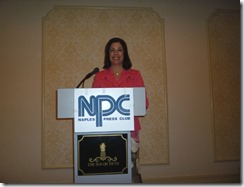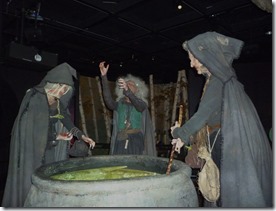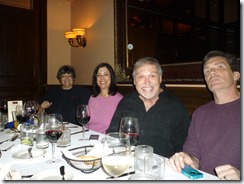Increase the Chaos. Engage the Reader. by Julie Anne Lindsey
Chaos is one of my favorite things about fiction. This is especially true in a cozy mystery. I truly enjoy the insane amount of juggling required by the heroine. As a woman, I can relate to the pressure and frustration of handling too much- minus the murder investigation, of course – and it’s fun to see the scenarios unfold on someone else for a change. I can relate. It’s no secret women handle unthinkable amounts of responsibilities while maintaining the peace and meeting unreasonable expectations of others. We hold down the household, punch a time clock, volunteer in the community, date, please our family, entertain our friends and so much more. (We really are the more miraculous portion of our species. In my humble opinion). Which is why we all deserve a good book and a break from time to time.
As writers, it’s our job to connect strangers with a character we dreamed up. Chaos is a common ground we can use to our advantage. When I fall into a great new cozy or amateur female sleuth series, I immediately connect with the heroine if she’s got her hands full. I nod along and smile, thinking, man-oh-man am I glad it’s not me this time. My heart goes out to her. It’s hard keeping things afloat, and honestly, the chaos can be pretty entertaining when I’m not on the business end of things. 
As I write each mystery, I want my heroine overwhelmed, well-liked and spread paper-thin. I want readers to feel the pull of hands on her time and person. So, as I plot and scheme a fun new investigation, I ask myself “What do I do every day?” and then “What do my friends do?” What keeps us so busy? The snowball method takes over from there because the short answer is we do too much.
Piling up the trouble is a great writers’ tool. It’s a fun and easy way to increase the chaos and pacing of a story. It keeps the pages going and stops the story from stagnating. I spend extra time on my outlines peppering in all the commitments my heroine, Patience, has to maintain in addition to surviving the wrath of a provoked killer and exploring the leads in her investigation, not to mention all the people she wants to please.
Add responsibilities to connect readers to your heroine. Give her problems they can all relate to, like family and romance. Those things are complicated. Messy. Real.
In my newest release, Murder Comes Ashore, I’ve piled up the everyday things that make a woman bananas. As my heroine pursues her investigation, (the crux of the story), she’s drawn away repeatedly by phone calls from clients, impromptu visits from family and a frustrating love triangle she’d prefer not to think about. She’s running from a killer, volunteering at the grade school and questioning birders about anything unusual they might have seen since the murder. Local law enforcement is running a parallel investigation and they get in her way, too.
Adding reality to the fiction anchors readers to your story. Who can’t related to a boss that expects us to show up on time? Or a sister who takes it personally if you’re five minutes late for dinner? The predicaments don’t have to be fantastical because they’re fiction. Take the things that make you the craziest and share them with your heroine. It is fun to move the burden onto someone else and it bridges the gap between you and women readers everywhere. Hey, it’s no fun when I have to fold laundry, check homework assignments and explain to my mom why I haven’t called all week, but when those things fall to a character, I smile because we share common ground. And us XX chromosome types have to stick together.
If you’re looking for a fun new mystery to cozy up with, I hope you’ll consider my new release, Murder Comes Ashore. It’s packed with chaos and a heroine who understands. Besides, who couldn’t use an island escape right now?
Murder Comes Ashore
Patience Price is just settling into her new life as resident counselor on Chincoteague Island when things take a sudden turn for the worse. A collection of body parts have washed up on shore and suddenly nothing feels safe on the quaint island.
Patience instinctively turns to current crush and FBI special agent Sebastian for help, but former flame Adrian is also on the case, hoping that solving the grisly crime will land him a win in the upcoming mayoral election.
When the body count rises and Patience’s parents are brought in as suspects, Patience is spurred to begin her own investigation. It’s not long before she starts receiving terrifying threats from the killer, and though she’s determined to clear her family’s name, it seems the closer Patience gets to finding answers, the closer she comes to being the killer’s next victim.
Julie Anne Lindsey is a multi-genre author who writes the stories that keep her up at night. She’s a self-proclaimed nerd with a penchant for words and proclivity for fun. Julie lives in rural Ohio with her husband and three small children. Today, she hopes to make someone smile. One day she plans to change the world.
Murder Comes Ashore is a sequel in her new mystery series, Patience Price, Counselor at Large, from Carina Press.
Learn About Julie at:



























































